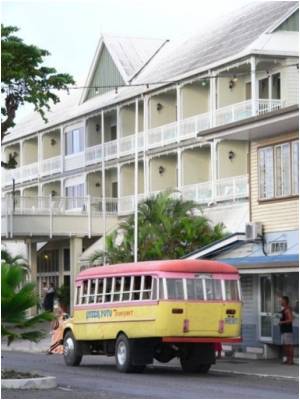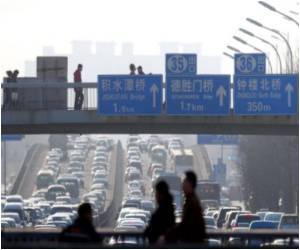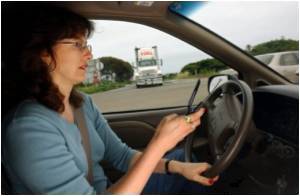Everyday in the United States, 25 million children ride to and from school in bright yellow buses driven by mom and pop drivers.

But of the hundreds of thousands of drivers of the nearly half a million school buses that ply US and Canadian roads every day, a select few are road safety aces.
Altizer and Rodriguez count themselves among those safety stars. They travel for miles across the United States and Canada to compete in "road-eos", driving around obstacle courses on which they have to do exercises like avoid crushing tennis balls with their tires or overrunning a stop line with their bumpers.
This year, 102 drivers from as far away as Alaska and Canada and as close as Virginia, descended on Linthicum, Maryland for the School Bus Driver International Safety Competition to spend a weekend in July, driving around a car park near Baltimore Washington International Airport.
Many had paid their own way to the competition or been sponsored by their counties and school boards, all for the honor of winning a plaque in one of three categories.
Altizer has been driving a school bus for 32 years and has competed nine times in what he calls "the international". This year, he drove a small bus in the competition.
Advertisement
"Plus your name is put in the book that goes out every year that has the names of previous winners. That's halfway engraved in stone so years from now someone can look in that book and say, 'Russell won in that bus, that year.'
Advertisement
Gary Catapano, chairman of the National School Transportation Association's safety and security committee which organizes the road-eo, called the competition the "World Cup of school bus safety competitions" and brimmed with praise for the participants.
"These people are not only the best of the best in terms of maneuvering or being one with the bus, but they also have fantastic safety records -- some of them have driven 15, 20 years without an accident," Catapano told AFP.
"Our schoolbus safety record in North America is amazing in terms of the way we watch over children and operate safely, and these drivers really are the safest of the safe."
According to the School Bus Information Council (SBIC), the more than 800 school-aged children who are killed each year in motor vehicles, as pedestrians or on bicycles during school hours could still be alive "if they rode in school buses."
Last year, only five children were killed as passengers in school buses, the SBIC says. To the competitors at the "international" that was five too many.
Altizer did win his category, with Larry Hannon of Centennial school district in Pennsylvania winning the conventional bus category -- the buses with a 'nose' on them -- and Mark Miller of Bellingham public schools in Washington state winning in the flat-fronted transit category.
But for Altizer, winning was secondary to taking part.
For him, "the international" is an excuse to take a holiday, see how city folk live, and drive a bus -- which he does at home anyway.
"I don't go on vacation. I live in the country. This competition is my sort of vacation... it takes me to cities I have no reason to go to, other than for this," he told AFP.
"Between the state competition and here, I'm putting up hay and working cattle on the farm.
"Then I come here and do this, and then go back home and back to driving a summer school bus and farming -- the normal life," he said.
Source-AFP









